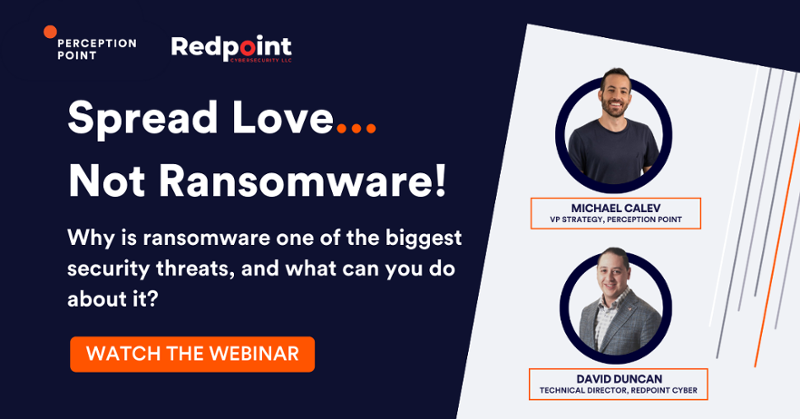Ransomware attacks are on the rise. In 2021 alone, FinCEN reported an average of $102.3 million ransomware transactions per month. Last year’s figure exceeded the value reported in 2020, amounting to $416 million for the whole year.
The above report illustrates the rapid escalation of ransomware activities every year. One main contributor to its prevalence is a new criminal business model called ransomware as a service (RaaS).
In this article
What is Ransomware?
Before diving deep into this new ransomware as a service model, let’s define what ransomware is.
Ransomware is malware that encrypts files on computers and servers within an organization. Once the encryption is in place, the ransom asks for a decryption key. Without the decryption key, the organization’s confidential files are at risk of being released to another buyer or sold on the dark web. With their data taken hostage, organizations have no choice but to meet the attacker’s demands.
A ransomware attack happens in several stages. But the main phases include initiation, encryption, ransom request, and acquisition. In the past, attackers have always used this linear model to execute ransomware schemes. But recent developments in tech have opened doors to the multi-dimensional RaaS model.

Tal ZamirCTO, Perception Point
Tal Zamir is a 20-year software industry leader with a track record of solving urgent business challenges by reimagining how technology works.
TIPS FROM THE EXPERTS
- Adopt a zero-trust architecture. Move beyond traditional perimeter defenses and implement a zero-trust model, which requires verification from everyone trying to access resources, whether inside or outside the network.
- Simulate ransomware scenarios. Regularly conduct simulated ransomware attacks to test your incident response plans. This helps identify weaknesses in your defenses and ensures your team is prepared for a real incident.
- Monitor for abnormal file access behavior. Use behavioral analytics tools to detect unusual file access patterns, such as mass encryption or deletion activities. Early detection of these behaviors can help you respond before ransomware spreads.
- Engage with external incident response teams. Establish a relationship with an external incident response provider. These experts can offer rapid assistance in the event of an attack and help you navigate the complexities of a ransomware incident effectively.
What You Need to Know About Ransomware as a Service
International cloud infrastructure has gained traction over the years. Because of this accessibility, transnational cyber gangs can attack organizations in the United States and other countries using sophisticated cybersecurity programs while avoiding extradition. The easier it gets, the more ways hackers can make money—namely, RaaS.
RaaS Makes Cyber Crime Convenient
The ransomware-as-a-service model functions similarly to any other software-as-a-service (SaaS) solution. Ransomware developers rent ready-made malware tools to buyers, allowing virtually anyone to carry out an attack regardless of skill. This model makes ransomware more accessible to inexperienced cybercriminals, elevating the threat to new heights.
RaaS is Expanding
Ransomware scamming is a profitable endeavor, making it an appealing activity among cybercriminals. REvil and DarkSide are the two key players in the RaaS space. They were responsible for the JBS and Colonial Pipeline attacks, respectively. These were some of the most disruptive attacks in the last year. Even more concerning is that they were both carried out using RaaS.
RaaS is Getting More Sophisticated
Previous attacks have primarily targeted organizations that can afford to pay large ransoms. Now that ransomware is more widely available, that may no longer be the case. Small businesses now represent a comparatively large payday for attackers due to RaaS.
How You Can Defend Your Business
Businesses can take several precautions to reduce their vulnerability to these attacks. Implement measures like:
Setting Up a Clear Policy
First, organizations such as the FBI advise against paying a ransom, so businesses should adopt a policy of decrypting ransomware in other ways.
Adding More Security Controls
Controls such as multi-factor authentication and network segmentation will limit the effectiveness of ransomware.
Training Your Employees
The majority of attacks begin with phishing. Organizations should therefore train all employees to recognize attempts and use strong passwords.
Updating Your Systems
Installing updates and patches as soon as they become available protects businesses from old vulnerabilities that RaaS tools may exploit.
Automate!
Given the sophistication of some RaaS tools, automation is a critical safety step in monitoring and incident response. With the rapid-fire speed that these cyber criminals operate at, only another machine can detect and respond to the threats in time.
The last few years have seen a spike in ransomware attacks. Many organizations have suffered. With targets ranging from international meat producers and global technology companies to oil pipelines, it can be intimidating to organizations that are just starting their business.
Reaching out to the right service provider, whether ransomware protection or other security services, is the first crucial step to safeguard your enterprise. Be sure to check Perception Point’s holistic security platform and incident response service. You can also tune in to our recorded webinar on ransomware to learn more.

Ransomware is malware that encrypts files on computers and servers within an organization. Once the encryption is in place, the ransom asks for a decryption key. Without the decryption key, the organization’s confidential files are at risk of being released to another buyer or sold on the dark web. With their data taken hostage, organizations have no choice but to meet the attacker’s demands.
– RaaS Makes Cyber Crime Convenient
– RaaS is Expanding
– RaaS is Getting More Sophisticated
Businesses can take several precautions to reduce their vulnerability to these attacks. Implement measures like:
– Adding More Security Controls
– Training Your Employees
– Updating Your Systems
– Automating Monitoring
























